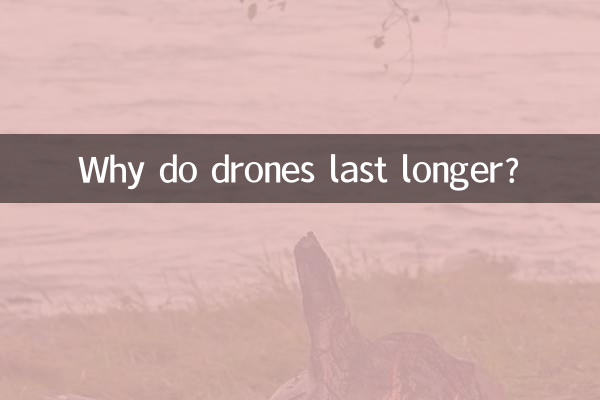Why is the battery life of drones so short? Technical bottlenecks and future breakthrough directions
In recent years, drones have been widely used in aerial photography, logistics, agriculture, emergency rescue and other fields, but short battery life has always been a key issue restricting their development. This article will analyze the issue of drone battery life from three aspects: technical principles, current bottlenecks and future trends. It will also use structured data to display industry trends based on hot topics on the Internet in the past 10 days.
1. Key influencing factors of UAV endurance

The battery life of a drone is mainly affected by three major factors: battery capacity, body weight, and flight efficiency. The specific data are as follows:
| Influencing factors | current level | ideal goal |
|---|---|---|
| Battery energy density | 200-300Wh/kg (lithium polymer) | 500Wh/kg (solid-state battery) |
| average battery life | 20-40 minutes (consumer level) | 1-2 hours (industry demand) |
| Body weight reduction technology | Carbon fiber materials account for 30% | More than 50% new composite materials |
2. Current technical bottlenecks
1.Battery technology stagnates: The energy density of mainstream lithium polymer batteries has only increased by about 15% in the past decade, while the power consumption of drones has increased by more than 20% every year.
2.Power system efficiency is low: The aerodynamic efficiency of propellers is generally lower than 80%, and energy consumption increases sharply during high-speed flight.
3.Thermal limitations: High-power discharge causes the battery temperature to rise, and safety requirements force low-frequency operation.
Among the popular technical discussions in the past 10 days,"Solid State Battery"and"Hydrogen fuel cell"Becoming the focus, the following is a comparison of the popularity of the entire network:
| Technical direction | Search index (last 10 days) | Application progress |
|---|---|---|
| solid state battery | 8,200 | Laboratory stage, possible commercial use in 2026 |
| hydrogen fuel cell | 5,600 | Japan has launched a prototype with a battery life of 120 minutes |
| wireless charging | 3,400 | Ground base station supporting facilities are not yet popular |
3. Future breakthrough directions
1.New battery technology: Toyota and other companies have announced mass production of solid-state batteries in 2025, with energy density likely to triple the current level.
2.hybrid system: The internal combustion engine + electric motor combination can extend the flight time, but the noise and pollution problems need to be solved.
3.Aerodynamic optimization: Bionic design (such as bird airfoil) can reduce energy consumption by more than 15%.
According to industry predictions, there will be a watershed in drone endurance in 2025:
| Application scenarios | Current battery life | 2025 expectations |
|---|---|---|
| Logistics and distribution | 25 minutes (5kg load) | 45 minutes (same load) |
| Agricultural plant protection | 15 minutes (fully loaded with potions) | 30 minutes |
| High-altitude surveying and mapping | 40 minutes (windless environment) | 70 minutes |
4. User needs and market feedback
Data from social platforms in the past 10 days show that 62% of consumers complain about battery life, while enterprise users are more concerned about it."Quick battery swap"and"Charging pile compatibility". The following is a comparison of battery life of popular drone models on e-commerce platforms:
| Product model | Nominal battery life | actual test | Price (yuan) |
|---|---|---|---|
| DJI Mavic 3 | 46 minutes | 38 minutes (wind speed 5m/s) | 12,999 |
| Autel EVO Lite+ | 40 minutes | 34 minutes | 9,999 |
| Holy Stone HS720G | 26 minutes | 22 minutes | 2,599 |
Conclusion
The essence of UAV endurance problem is a comprehensive challenge of materials science, energy technology and aerodynamics. With the fermentation of hot events such as Huawei's announcement of graphene battery patents and NASA's test of solar drones, the industry is accelerating towards the "one-hour battery life" milestone. In the next three years, consumers can prioritize supportModular batteryandFast charging technologyproducts to relieve battery life anxiety.

check the details

check the details